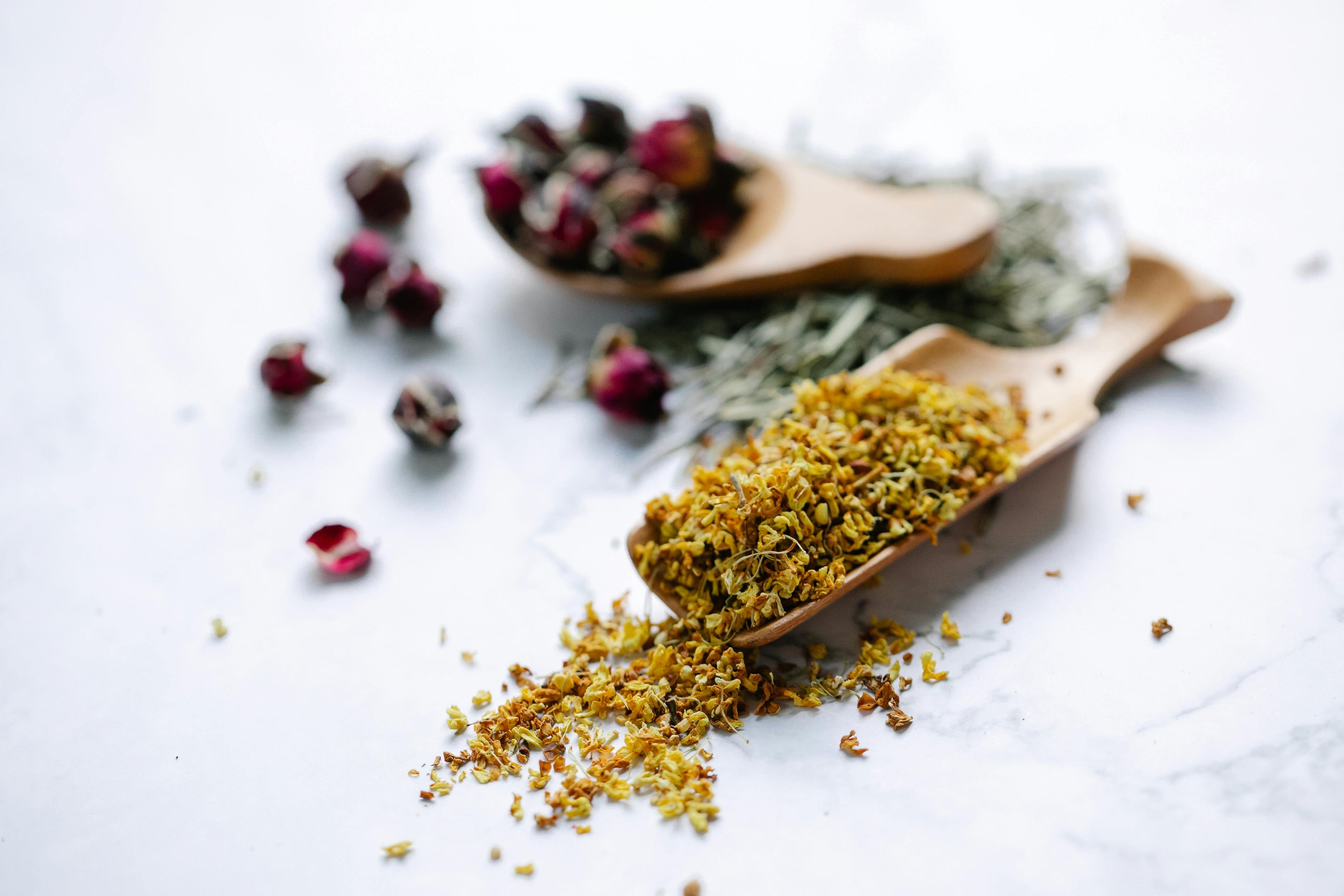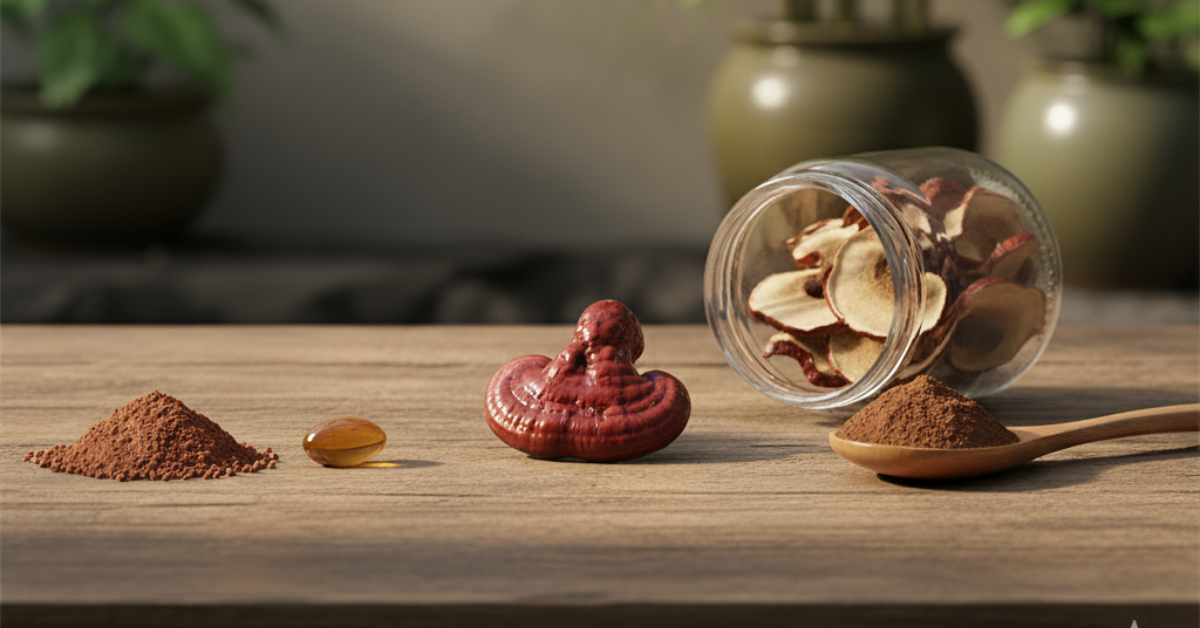When facing respiratory challenges or immune concerns, the supplement aisle presents a bewildering choice: single-ingredient powerhouses or complex herbal blends. While the precision of isolated compounds appeals to our scientific sensibilities, Traditional Chinese Medicine's 2,000-year track record suggests a different approach—one that modern research is increasingly validating.
The question isn't just about choosing between herbs; it's about choosing between philosophical approaches to healing. Should we target health challenges with surgical precision using single ingredients, or embrace the complexity of multi-herb formulations that mirror the intricate nature of our body's systems?
Recent clinical data reveals a compelling answer: multi-herb formulations are growing at 22% CAGR versus 9% for single-ingredient supplements—and the science behind this shift is more fascinating than you might expect.
What Makes Multi-Herb Formulations Different from Single-Ingredient Supplements?
The Reductionist vs. Holistic Paradigm
Single-ingredient supplements follow pharmaceutical thinking: identify one active compound, isolate it, and deliver it in precise doses. This approach works well for addressing specific deficiencies—think vitamin D for bone health or iron for anemia.
Multi-herb blends operate on an entirely different principle. Rather than overwhelming a single biological pathway, they engage multiple systems simultaneously, creating what researchers call "network pharmacology"—a therapeutic approach that mirrors how diseases actually develop and progress.
Consider respiratory health: A cold virus doesn't just attack your lungs—it triggers inflammatory cascades, depletes immune resources, disrupts sleep, and creates oxidative stress. A multi-herb approach addresses each of these interconnected challenges rather than focusing solely on antiviral activity.
Traditional Chinese Medicine's Scientific Foundation
The ancient Chinese weren't just throwing herbs together randomly. Their Jun-Chen-Zuo-Shi formulation system—which translates to Emperor-Minister-Assistant-Messenger—represents sophisticated understanding of herb interactions:
-
Jun (Emperor): Primary therapeutic herbs targeting the main condition
-
Chen (Minister): Supporting herbs that enhance the emperor's effects
-
Zuo (Assistant): Herbs that moderate side effects and provide secondary benefits
-
Shi (Messenger): Herbs that improve bioavailability and guide the formula to target organs
This hierarchical system, refined over millennia, anticipates modern concepts like bioavailability enhancement, side effect mitigation, and synergistic potentiation that pharmaceutical companies are only now beginning to master.
How Do Synergistic Mechanisms Work in Multi-Herb Blends?
Beyond Simple Addition: The Mathematics of Synergy
True synergy occurs when 1 + 1 = 3. In herbal medicine, this happens through several mechanisms:
Bioavailability Enhancement: Many herbs contain compounds that improve absorption of other herbs. Piperine from black pepper increases curcumin absorption by 2000%, but similar effects occur naturally in traditional formulations.
Pathway Amplification: Different herbs can target the same biological pathway at multiple points, creating amplified effects. Clinical studies show that Cordyceps + Reishi combinations increase infection resistance by 42% versus individual use—a result neither herb achieves alone.
Complementary Mechanisms: While one herb might boost interferon production, another might enhance NK cell activity, and a third might strengthen barrier function. The combined effect addresses immune challenges more comprehensively than any single approach.
Case Study: The Forsythia-Lonicera Partnership
Research on traditional Chinese cold formulas reveals why certain herb combinations became standard practice. Forsythia-Lonicera combinations demonstrate 3.2× stronger antiviral effects than individual extracts, primarily because:
-
Forsythia's phillyrin compounds disrupt viral replication
-
Lonicera's chlorogenic acids prevent viral entry into cells
-
Together, they create a two-stage antiviral barrier that single herbs cannot match
This explains why virtually every traditional Chinese cold formula contains this pairing—ancient physicians discovered through empirical observation what we now understand through molecular mechanisms.
Why VirPro's 12-Herb Formula Exemplifies Optimal Blend Design
Analyzing the Formulation Strategy
VirPro's ingredient profile demonstrates sophisticated understanding of herb synergy principles:
Primary Immune Modulators (Jun):
-
Cordyceps sinensis (30mg): Enhances cellular energy production and immune cell function
-
Ganoderma lucidum/Reishi (15mg): Provides adaptogenic immune balancing
Respiratory Support Ministers (Chen):
-
Forsythia suspensa (36mg): Antiviral and anti-inflammatory actions
-
Lonicera japonica (36mg): Synergistic antiviral effects with Forsythia
-
Scutellaria baicalensis (36mg): Powerful anti-inflammatory and bronchodilator effects
Harmonizing Assistants (Zuo):
-
Glycyrrhiza uralensis/Licorice (22mg): Reduces inflammation and harmonizes harsh effects of other herbs
-
Platycodon grandiflorus (18mg): Guides formula to lung tissues and expels phlegm
Bioavailability Messengers (Shi):
-
Zingiber officinale/Ginger (18mg): Enhances circulation and absorption of other herbs
The Science Behind Specific Combinations
Astragalus + Glycyrrhiza Synergy: Research demonstrates that this combination increases interferon-gamma production by 58% compared to either herb alone. The mechanism involves Astragalus polysaccharides enhancing immune cell proliferation while Glycyrrhiza triterpenes optimize immune cell signaling.
Cordyceps + Reishi Adaptogenic Effects: These medicinal mushrooms work through complementary pathways—Cordyceps enhances cellular ATP production while Reishi modulates stress hormone responses. Combined, they create sustained energy without the crash associated with stimulants.
Traditional Lung-Clearing Quartet: Fritillaria, Platycodon, Stemona, and Armeniacae work together to clear respiratory congestion through different mechanisms—mucus thinning, bronchial dilation, cough suppression, and expectoration enhancement.
What Clinical Evidence Supports Multi-Herb Superiority?
Head-to-Head Comparison Studies
Respiratory Recovery Times: Clinical trials comparing multi-herb formulations to single-ingredient supplements show significant advantages. 12-herb respiratory formulations demonstrate 39% faster recovery from upper respiratory infections compared to single herbs or placebo controls.
Immune Function Markers: Studies measuring immune function improvements show multi-herb blends consistently outperform single ingredients:
-
Natural killer cell activity increases by average 34% with traditional blends vs. 18% with single herbs
-
Secretory IgA levels (first-line immune defense) improve 45% more with combination formulas
-
Seasonal allergy symptoms reduce by 67% with multi-herb approaches vs. 31% with single herbs
Safety Profile Advantages
Contrary to concerns about herb interactions, research reveals multi-herb formulations actually show reduced hepatotoxicity risks compared to isolated compounds. This occurs because:
-
Dose Distribution: Therapeutic effects are achieved with smaller doses of individual herbs
-
Protective Co-factors: Many traditional combinations include hepatoprotective herbs
-
Balanced Pharmacokinetics: Multiple herbs prevent excessive accumulation of any single compound
How Do Multi-Herb Blends Address Modern Respiratory Challenges?
Post-Viral Recovery and Long COVID Support
Modern respiratory challenges often involve complex, multi-system dysfunction that single-ingredient approaches struggle to address. Post-viral syndromes exemplify this complexity:
-
Persistent Inflammation: Requires both acute anti-inflammatory herbs (Scutellaria) and chronic inflammation modulators (Reishi)
-
Energy Depletion: Demands cellular energy enhancers (Cordyceps) combined with adaptogenic support (multiple herbs)
-
Immune Dysregulation: Needs both immune stimulation and immune balancing—impossible with single herbs
Environmental Toxin Defense: Urban respiratory challenges from pollution and chemicals require multi-pathway protection:
-
Antioxidant herbs neutralize free radicals
-
Detoxification herbs enhance toxin elimination
-
Barrier-strengthening herbs improve respiratory tract resistance
-
Anti-inflammatory herbs reduce chronic irritation
Addressing Individual Variation
Genetic Polymorphisms: Different people metabolize herbs differently based on genetic variations. Multi-herb formulas provide multiple pathways to therapeutic benefit, ensuring effectiveness across diverse populations.
Constitutional Differences: Traditional Chinese Medicine recognizes that people have different constitutional patterns. Multi-herb formulas can simultaneously address "hot" and "cold" patterns, "deficiency" and "excess" conditions—providing broad therapeutic coverage.





